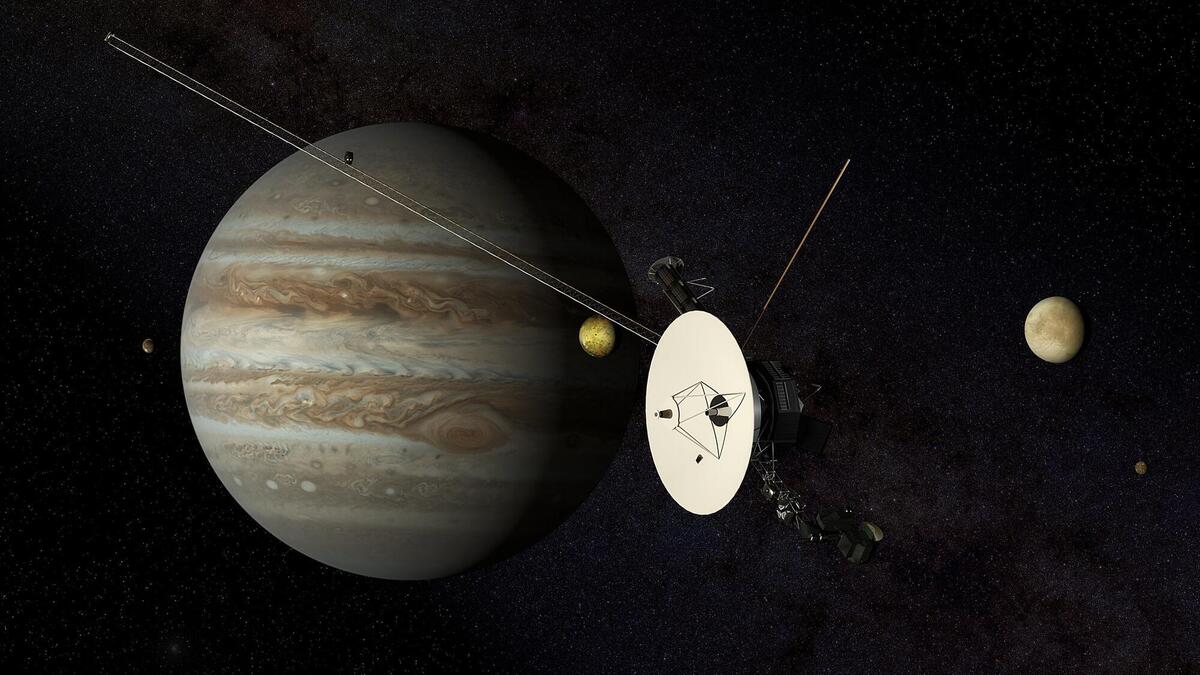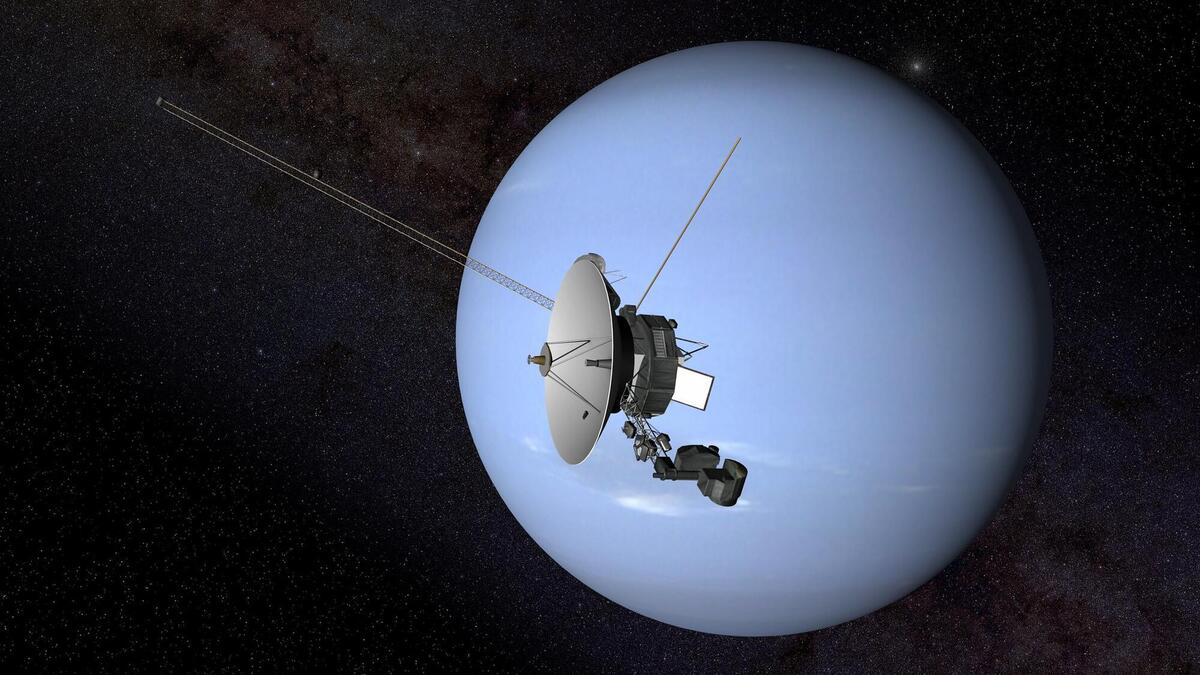46-Year-Long Mission Or Where Is Voyager 2 Now?

Voyager 2 launch date on August 20, 1977, marked a huge milestone in NASA’s history of space exploration — it was the first time that the agency managed to launch a space probe that would eventually travel billions of kilometers away from its launch site on Cape Canaveral. At the time, no one could know for sure that the Voyager 2 mission would prove such a resounding success. That is why the second probe set off 16 days before the first one — should this launch fail, Voyager 1 would take over the ‘second’ spacecraft’s tasks. Jumping a bit ahead, let’s say that both probes exceeded the scientists’ expectations in terms of mission duration, the data collected, and the distance traveled. So, let’s find out where is Voyager 2 now and what this veteran probe has helped us uncover so far.
Key Mission Objectives & Discoveries
The original mission plan was to visit five planets of the solar system — Jupiter, Saturn, Neptune, Uranus, and Pluto, which, at the time, had not been demoted to a dwarf planet yet. The mission was supposed to be a grand tour of the distant planets, and such an ambitious plan became possible thanks to a unique planet alignment in the late 1970s — the alignment that made it possible to travel over relatively short trajectories.
Still, even NASA’s budget is not limited, and eventually, the scientists were asked to research two planets instead of five, Jupiter and Saturn, using two Voyager probes sent along different trajectories.
Despite the budget cuts and the shortened mission plan, both spacecraft reached their goals and eventually exceeded them. Voyager 2 completed fly-bys of Jupiter (1979), Saturn (1981), Uranus (1986), and Neptune (1989), sending crucial information not available to scientists before. The spacecraft provided data about Jupiter’s atmosphere and four of its largest moons; it also discovered another moon, later called Adrastea. The probe confirmed the existence of a thing ring about Jupiter and helped study Saturn’s rings and satellites.
The same spacecraft discovered ten moons around Uranus and five more moons around Neptune — all over a relatively short span of a decade. In 2018, it officially reached interstellar space — an area where the Sun’s influence and gravitational pull is already very scarce.

Where Is Voyager 2 Now?
Not even NASA can provide exact information about Voyager 2 distance from Earth — the probe is still moving away at approximately 15 km/s or 54,000 km/h speed! However, our planet is moving around its axis even faster, so the distance between the veteran probe and its home planet is not constant. But even though we do not have an exact Voyager 2 location map, we do know that it is already in the constellation Pavo.
As far as sheer distance is concerned, where is Voyager 2 now 2023? Orbital Today explains that now, the distance is 20+ billion kilometers away. Given such an enormous distance, is it not easier to calculate where is Voyager 2 in light years? Even though this probe is one of the farthest-travelling spacecraft ever launched by humanity (second-farthest after Voyager 1), its distance is still measured in light hours, not years. So far, this probe has not even covered the distance of one light day — that is how vast the space around us is!
Voyager 1 And 2 Difference
Both probes have identical designs, and their original mission objectives were very similar, too. However, they had different launch dates and trajectories — the first probe, for example, was launched on a shorter trajectory and with a slightly higher speed of 17 km/s. So, even though the first probe was actually the second to leave its home planet, Voyager 1 reached its first road-trip milestone, Jupiter, several months sooner than Voyager 2. The first probe reached the interstellar space medium beyond the heliosphere in 2012 — six years earlier than the second spacecraft.
But again — where is the Voyager mission now? Are the two probes still moving in the same direction, simply at different speeds? No, as a matter of fact, the probes were never moving in identical directions — they always had different trajectories, even though both routes would eventually allow the probes to leave the solar system. Right now, the first, faster probe is over 24 billion km away from Earth and roaming the constellation Ophiuchus.
Since Voyagers traveled different routes, they made different discoveries — both probes provided data on atmospheric compositions of gas giants and sent pictures of planetary moons, but the actual satellites` studies and reports were different.
Another crucial similarity between both space roamers is that Voyagers carry identical diplomatic messages aboard. When the spacecraft's power supplies run out, and they will no longer be able to send any data back to Earth, both probes will likely keep drifting our Milky Way Galaxy with an identical payload aboard — the Golden Records with terrestrial music, the sounds of Earthly nature, and a few other souvenirs for anyone interested in discovering them.